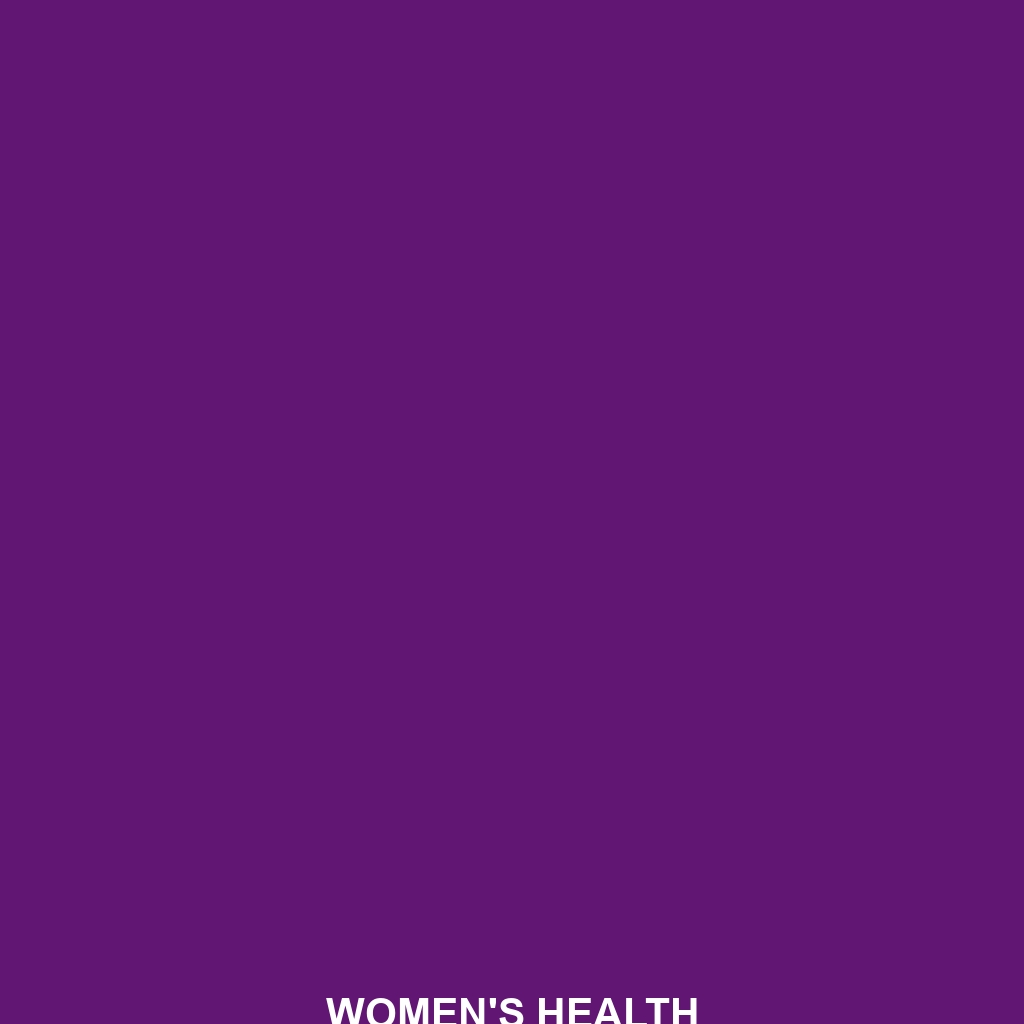Women’s Health:
Definition and Description of Women’s Health:
Women’s health encompasses a wide range of health issues specifically affecting women, including reproductive health, hormonal changes, and conditions unique to or predominantly affecting women. The term “women’s health” often refers to the diagnosis and treatment of medical issues, preventive care, and the overall physical and emotional well-being of women. Key areas of focus include menstruation, fertility, pregnancy, menopause, and diseases like breast cancer and osteoporosis.
Causes of Women’s Health:
The causes of health issues affecting women can be multifactorial. Underlying conditions such as polycystic ovary syndrome (PCOS), endometriosis, and hormonal imbalances can significantly affect women’s health. External factors such as environmental toxins, lifestyle choices (including diet and exercise), and stress also play a crucial role. Additionally, genetic predispositions can increase the likelihood of certain health conditions, making some women more vulnerable than others.
Associated Symptoms of Women’s Health:
Common symptoms associated with women’s health issues can vary widely. They may include irregular menstrual cycles, pelvic pain, heavy bleeding, mood swings, and changes in weight. Symptoms related to reproductive health, such as infertility or recurrent pregnancy loss, also fall under women’s health. Other conditions like cardiovascular disease may present differently in women than men, emphasizing the importance of tailored approaches to women’s health.
Diagnosis of Women’s Health:
Healthcare professionals typically diagnose women’s health issues through a combination of patient history, physical examinations, and various tests. Common diagnostic procedures may include pelvic examinations, Pap smears, ultrasounds, hormone level tests, and mammograms. Understanding the nuances of each woman’s health situation allows for a personalized diagnosis and treatment plan.
Risk Factors for Women’s Health:
Certain populations of women may be at higher risk for specific health issues. Age is a significant factor, as many conditions become more prevalent during reproductive years and menopause. Lifestyle factors, including smoking, poor diet, obesity, and lack of exercise, can also contribute to increased risk. Family history and socioeconomic status may further influence vulnerabilities to various health conditions.
Complications of Women’s Health:
Untreated women’s health issues can lead to serious complications. For example, conditions like endometriosis can result in chronic pain and fertility problems. Heart disease, which often goes unrecognized in women, can lead to severe cardiovascular events if unaddressed. Long-term neglect of women’s health can also impact mental health, leading to increased anxiety or depression.
Treatment Options for Women’s Health:
Treatment options vary widely depending on the specific health issue. They can range from lifestyle changes and nutritional counseling to hormonal treatments and surgical interventions. Common medical treatments include medications for pain management, birth control pills for cycle regulation, and hormone replacement therapy during menopause. It’s also essential to consider complementary therapies, such as physiotherapy and counseling, to address physical and emotional aspects.
When to See a Doctor for Women’s Health:
Women should seek medical attention if they experience symptoms such as severe pelvic pain, irregular bleeding, prolonged menstrual cycles, or any unusual changes in their reproductive health. Regular check-ups, particularly during key life stages like puberty, pregnancy, and menopause, are also vital for maintaining health and preemptively addressing issues.
Prevention of Women’s Health:
Preventive measures can greatly benefit women’s health. Maintaining a balanced diet, engaging in regular physical activity, and avoiding smoking and excessive alcohol consumption are foundational aspects of prevention. Additionally, regular screenings and check-ups, advocating for personal health needs, and staying informed about women’s health issues can significantly reduce risk.
Statistics and Prevalence of Women’s Health:
Recent statistics indicate that approximately 1 in 10 women of childbearing age suffer from conditions like PCOS. Furthermore, globally, breast cancer is the most common cancer among women, affecting 2.3 million annually. Such statistics highlight the importance of understanding and prioritizing women’s health at both individual and public health levels.
Personal Stories or Case Studies about Women’s Health:
Personal narratives and case studies can shed light on the challenges women face regarding their health. For instance, stories from women navigating cancer diagnoses often underscore the emotional and physical toll of such conditions, as well as the importance of support from healthcare providers, family, and friends. These experiences can motivate others to advocate for their health and seek necessary care.
Myths and Misconceptions about Women’s Health:
There are numerous myths surrounding women’s health, such as the belief that menopause happens abruptly or that all women experience chronic pain as a normal part of their reproductive health. Debunking these myths with facts is crucial for educating women about what to expect in their health journeys and ensuring they seek appropriate care.
Support and Resources for Women’s Health:
For those dealing with women’s health issues, various resources are available. Support groups and organizations can provide community and information. For more information, visit this support page for additional resources and help.
Conclusion about Women’s Health:
In summary, women’s health is a multifaceted field encompassing a variety of physical and emotional issues. Understanding risk factors, seeking proper treatment, and prioritizing preventive care can greatly improve health outcomes for women. It’s essential for women to take charge of their health by staying informed and connected with healthcare professionals.
